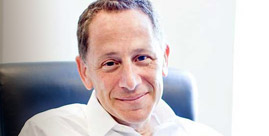
David Rothkopf
CEO and Editor, The FP Group
Sometimes political inertia can be our friend. For decades it has been next to impossible to have a rational conversation about retirement health care finance in the United States — the subject was both too big and too sensitive for polarized political parties to discuss constructively. The problem grew as Americans aged and the funding deficits inflated.
Then, something remarkable happened: progress. Thanks to advances in medicine, improved health care, and new technologies, it has become clear that aging Americans, like older populations everywhere, are now on the verge of becoming one of the most powerful new economic forces on the planet. Rather than retiring, older workers are positioned to bring their unequaled experience to the global marketplace in ways that were once impossible.
New technologies and the shift from a manufacturing to a service economy mean that, rather than retiring, older workers can now continue to add value for many more years, thus contributing to economic growth in ways unanticipated by economists — growth that could, in fact, help pay for the retirement health care needs of others. Actually, it is not inconceivable that older workers could be the ultimate answer to America’s “retirement problem.”
In 2000, there were 35 million Americans over the age of 65; today, there are nearly 50 million. By 2030, it is estimated there will be more than 70 million. Although citizens in this age range may have been viewed as a burden on the economy in the past, today it is reasonable to see them as a potential new workforce of tens of millions — a national resource that can enable us to actually capture and take advantage of accumulated experience that in the past was simply disappearing with retirement. Further, through telecommuting, even those for whom mobility is an issue will be able to contribute in meaningful ways. New programs embracing older workers as trainers can add value to existing businesses. Older workers pursuing entrepreneurial opportunities is also a growing likely contributor to the economy: in 2014 alone, 35 percent of new businesses were started by people over 50.
Naturally, older Americans who continue to work not only generate economic growth but also provide a growing tax base that can help offset retirement health care costs. We also know that working longer is shown to aid in positive physical, mental, and cognitive health. And of course, they will be consuming more. The result is a win–win.
Of course, such an adjustment requires that the political classes who have avoided addressing these issues — even when they loomed primarily as threats — be open to discussing how the growth of our cadre of mostexperienced workers represents a new opportunity. It means rethinking our views on issues like retirement age and the distribution of social benefits so that a system adapted to the new reality is both more equitable and more fiscally responsible.
Further, as careers expand in duration from what was common at the end of the 19th century — perhaps 25 to 30 years — to what may be twice that, we will have to consider the need to rethink the nature of education. Lifelong learning is the best way to ensure that every generation—not only the young—have the tools to compete and to contribute to society.
Tensions may be part of this inertia as well. Younger workers may feel that they are being edged out of opportunities because workers who might have once left the workforce do not. They may also resent the idea of reverse agism, where their lack of experience is seen as an even greater burden (especially as some older workers offer less-expensive labor to companies because they are working part time or have different expectations and needs).
In the past, discussing even a simple common-sense question like “Should our Social Security retirement age be adjusted to reflect the massive changes in life expectancy that have taken place since the system was established?” was considered a kind of third rail in US politics. The inability to address this issue has taken a toll and has created a generation of Americans confused and concerned about what they can expect in the future.
Now that new developments offer massive upsides as well as challenges, perhaps it will be less contentious—better yet, it should stimulate creativity among policy makers. While this idea seems like an oxymoron in our current political environment, as noted above, the private sector is not waiting to adapt. And as it sees the opportunities being created and develops new models and modalities of work, history suggests that the private sector will drag the political class into the future with it.
There is no reason to expect that this will be an easy transition. But both history and progress suggest that it is a transition that will come whether we are prepared for it or not.
About the author
David J. Rothkopf is CEO and editor of the FP Group, where he oversees all editorial, publishing, events, and other operations of the company, which publishes Foreign Policy magazine. He is also the President and CEO of Garten Rothkopf, an international advisory company specializing in global political risk, energy, resource, technology and emerging markets issues based in Washington, D.C.